Age Spot Treatment
What Are Age Spots?
Age spots, also called liver spots, are rounded, flat parts of the skin that range from light brown to black and have sharply defined borders. They commonly occur on the face and back of the hands but can be found on any part of the body.
Age spots are formed by a concentrated increase in pigment in an area of the skin. As their name suggests, they are more common among those who are more advanced in years. They can occur in people of any age, though, including children.
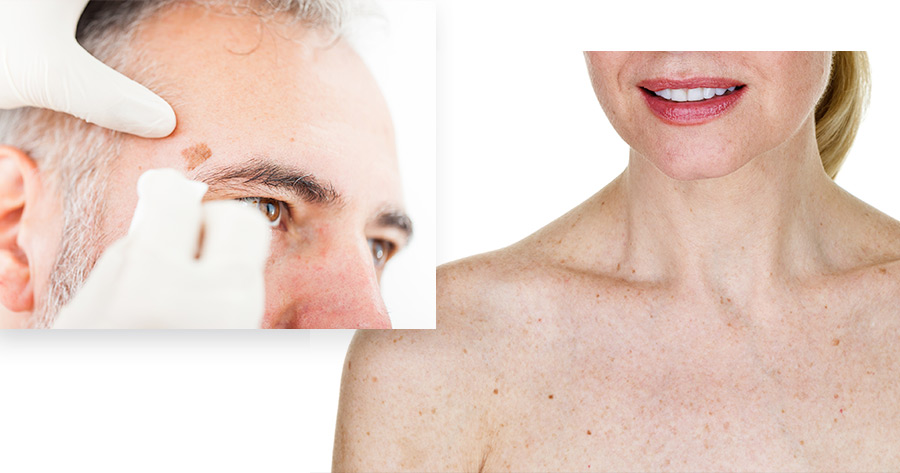
This condition is more prevalent in people who have spent a lot of time in the sun and is mainly caused by exposure to UV rays. This exposure can also come from prolonged use of tanning beds, which have been tied to an increased risk of skin cancer.
Although harmless, this skin condition is sometimes found along with signs of cancer or pre-cancer since both can be the result of spending a lot of time in the sun.
“Age spots pose no risk,” notes Angie Seelal, a Certified Registered Physician Assistant specializing in Dermatology with Advanced Dermatology, P.C., “but skin cancer definitely does, and it can be difficult to discern between the two. Before starting any treatment—especially an at-home course—see your dermatologist to rule out the dangerous damage of skin cancer.”
Learning how to check yourself for skin cancer is good, so you know what could be harmful. Regular full-body screenings for skin cancer with your dermatologist are important, but between appointments, you can help by performing A-B-C skin checks in the mirror.
If you are concerned about age spots, contact an Advanced Dermatology, P.C. provider and ask about our proven age spot treatment options.
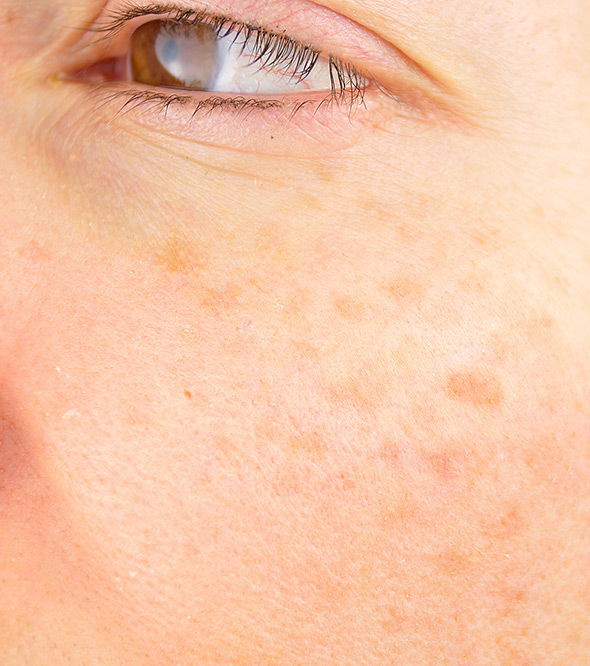
What Causes Age Spots?
Age spots are also called solar lentigines. UV rays accelerate the production of melanin–the pigment in your skin that gives it its color. This increase in melanin is your body’s way of trying to protect your skin. If melanin starts to group together in your skin, it will cause a specific area to darken, which we call age spots. So, sun exposure is an easy answer to what causes them. Fair-skinned individuals are more likely to be affected by UV rays, making them more susceptible to sun damage.
Age spots are not harmful and are mainly a cosmetic concern. However, they can sometimes be confused with other kinds of skin growth, including moles and even skin cancer. Remember that whenever you get a tan or sunburn, it means your skin has been damaged. This sun damage can lead directly to age spots and other signs of premature aging.
“While aging does cause a host of changes to our bodies, our skin doesn’t have to make us look or feel old,” says Dr. Fox. “A consultation with your dermatologist can help you identify the right treatment for you that will reduce or even remove age spots and leave you feeling and looking younger,” says Joshua Fox, M.D., an Advanced Dermatology, P.C. dermatologist.
When you see your dermatologist, they will examine your skin condition and ask you questions. If they are not able to tell immediately what kind of growth you have, they may perform a test to be sure before they recommend a treatment. After a visual inspection, they may perform a biopsy, which involves taking a small piece of the growth, to examine it microscopically.
If you have liver spots, there are different age spot treatment options, including over-the-counter medications, prescription medications, and treatments done in your dermatologist’s office.
How Can I Prevent Age Spots?
Many of the same recommendations for preventing skin cancer also apply to this condition.
Reducing sun exposure is the best way to reduce the likelihood of getting age spots. Wear a broad-spectrum sunscreen (which blocks both UVA and UVB rays) with an SPF of at least 15 and reapply regularly on all exposed skin areas, no matter the weather or season. If you must be in the sun, seek shade to avoid intense afternoon rays, and wear protective clothing, including a broad-brimmed hat.
While aging does cause a host of changes to our bodies, our skin doesn’t have to make us look or feel old. A consultation with your dermatologist can help you identify the right treatment to reduce or even remove them and leave you feeling and looking younger.
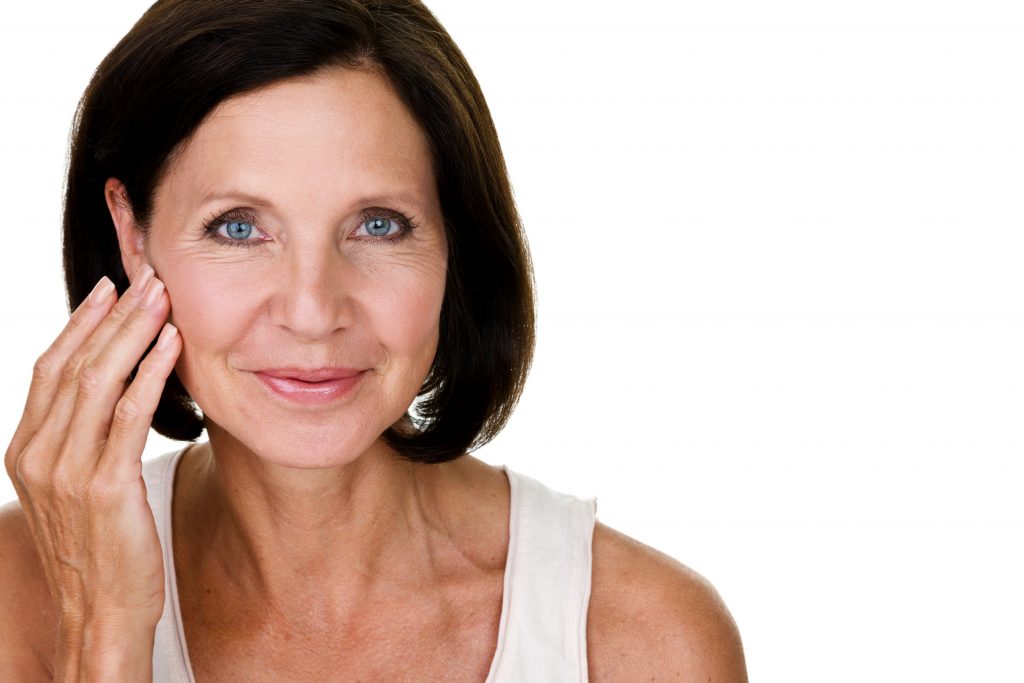
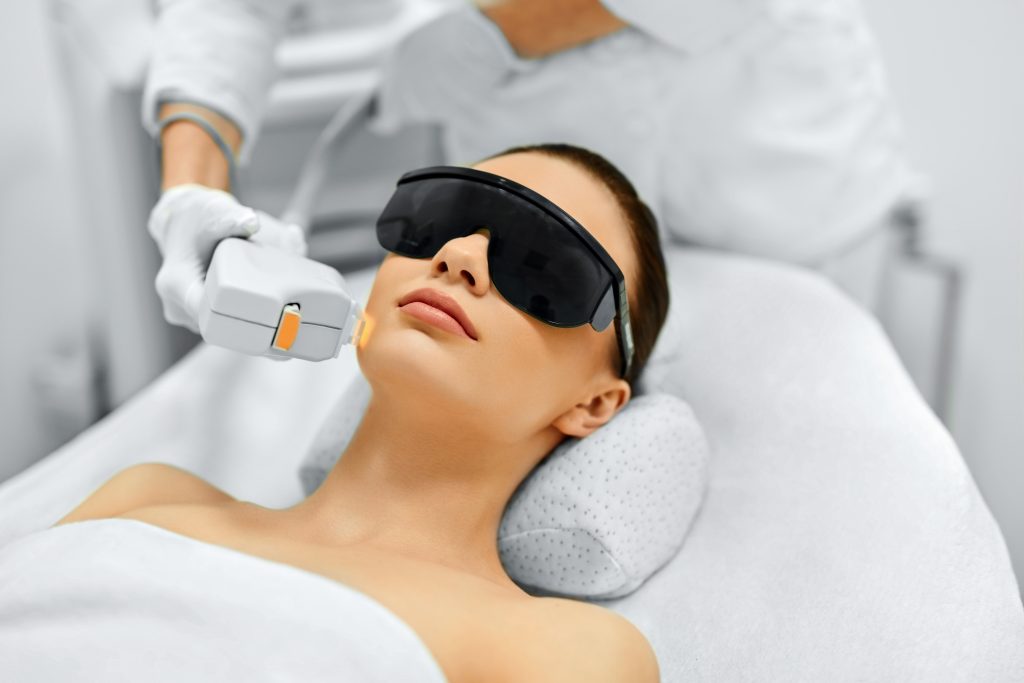
Topical Treatment Options
If you’re looking for a procedure-free way to lighten age spots, consider an over the counter or prescription-based lightening cream.
When using topical treatments, results can take several months because creams work by bleaching or changing the color of the darkened areas of skin over time.
Ask your dermatologist about safe, effective topical medications that include:
- Hydroquinone
- Glycolic acid
- Kojic acid
- Retinoids
- Mild steroids
However, be aware these may cause temporary discomfort or dryness. Always use sunscreen with SPF 30 or higher while using lightening creams product.
“For those considering a DIY topical skin lightener: Be careful,” warns Seelal. “One survey of OTC options showed that an alarming number contained the highly toxic ingredient mercury–which poses a neurological threat not only to the user but to those they come into close contact with, children and partners. What’s especially tricky is that some ingredient labels cloak mercury in other terms: calomel, cinnabaris, hydrargyri oxydum rubrum, or quicksilver. In general, look for an OTC product with hydroquinone, glycolic acid, or kojic acid. Your dermatologist can help recommend safe options and prescribe topical treatments.”
In-Office Dermatological Age Spot Treatment Options
Dr. Fox says most people do not get satisfactory results from these lotions and creams. “If these over-the-counter products don’t do enough to reduce the spots, your dermatologist has an arsenal of other treatments that do a great job of reducing or removing age spots.”
For faster and more effective results, consider these in-office treatments for age spot removal:
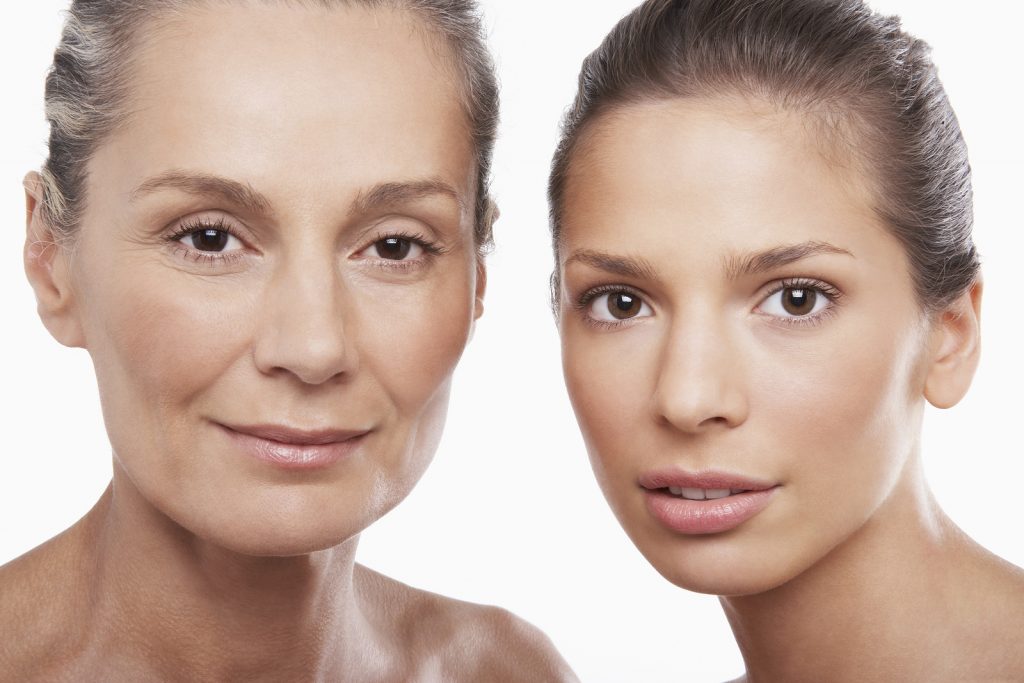
Prescription creams
Bleaching creams containing hydroquinone, used alone or with retinoids and a mild steroid, when used regularly, may partially fade age spots over time.
Q-Switched Lasers
Laser age spot removal can target melanin and melanocytes or resurface the skin to remove sun damage, brown spots, and liver spots. Some lasers target specific pigments in the skin and leave the surrounding tissue unharmed. Other lasers resurface the skin, which means they remove damaged skin cells to reveal new skin cells underneath. Lasers have been used in dermatology for many years in age spot treatment.
Microdermabrasion
The skin is sanded with a special instrument to lessen the age spot in this procedure. This procedure helps to strengthen and rejuvenate aging skin and may even help reduce fine lines and wrinkles.
Microneedling
Microneedling, also called Collagen P.I.N., causes small injuries to the skin with “micro” needles. This allows damaged skin to be healed over with new skin. A few treatments are usually needed for the best results.
Cryosurgery
This procedure uses liquid nitrogen to freeze skin tissue and remove age spots.
Chemical Peels
Chemical peels are powerful treatments that involve applying a layer of chemicals on the skin, which are then peeled off to remove the top layer of damaged skin cells. This helps reduce and remove age spots and strengthen the skin to boost collagen production. The result is a fresh complexion with renewed skin cells and diminished skin imperfections.
Laser Skin Rejuvenation–Fraxel and Pixel
A popular cosmetic treatment, Fraxel is a powerful resurfacing laser treatment that smoothes and rejuvenates the skin, removes age spots, and reduces the appearance of fine lines. Pixel is a more powerful resurfacing laser that also treats some of the deeper lines.
For more information about our in-office treatments, please visit our offices in Manhattan, Bergen County, Long Island, Queens, and more.
Frequently Asked Questions
What does an age spot look like?
Similarly to moles, age spots are oval and circular markings that appear on our skin as we age. They can be black, tan, or brown and usually appear in areas with the most sun exposure over the years. This includes the back of your hands, face, shoulders, upper back, and the tops of your feet.
What gets rid of age spots?
Age spots occur naturally, but there are many alternatives to complete liver spot removal. These include topical creams, lasers, chemical peels, and other options. However, you need to consult with a certified skin expert who can help you identify the best course of treatment, including age spot removal, depending on your goals and skin type.
Can age spots turn into cancer?
Age spots are not cancerous but can often be confused with actinic keratosis, which may develop into skin cancer. As a result, remember that both skin cancer and they tend to occur in areas that normally undergo heavy sun exposure. Always consult with an experienced dermatologist before initiating an age spot treatment plan.
Do age spots appear suddenly?
Age spots tend to appear gradually and usually go unnoticed, leading patients to believe they are actinic keratosis or a similar skin condition. If you are unsure, contact a dermatologist in your area and book a consultation for liver spot treatment.
Why am I suddenly getting brown spots on my face?
You may be getting brown spots on your face for many reasons. While these may be age spots, various skin lesions can be confused with these natural marks, so always consult a professional about proper treatment for age spots to avoid potential complications.
